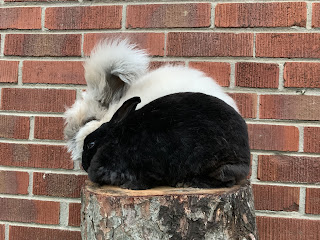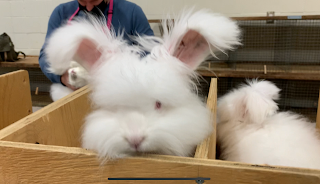English Angora Size

How big do they get? That is one of the most common questions I am asked by people new to the breed. An English Angora in a full show coat can be a very impressive sight and from that sight, one can easily conclude that these must be large sized rabbits. However they are not. Underneath that massive coat, a properly bred English Angora should have a short, tight, and compact body. Their heads are supposed to be broad with a wide and flat face which can add to the illusion, suggesting that there should be a large body behind that broad face. English Angoras are considered a medium size breed. The ARBA standard for the English Angora calls for adult males to be 5 - 7 lbs and adult females 5.5 - 7.5 lbs. Keep in mind that this includes the weight of that impressive show coat which can weight around half a pound. Once you shave off all that wool, they can look surprisingly small, even shockingly small to some people who are used to imagining these animals as giant balls of fluff. The wor



